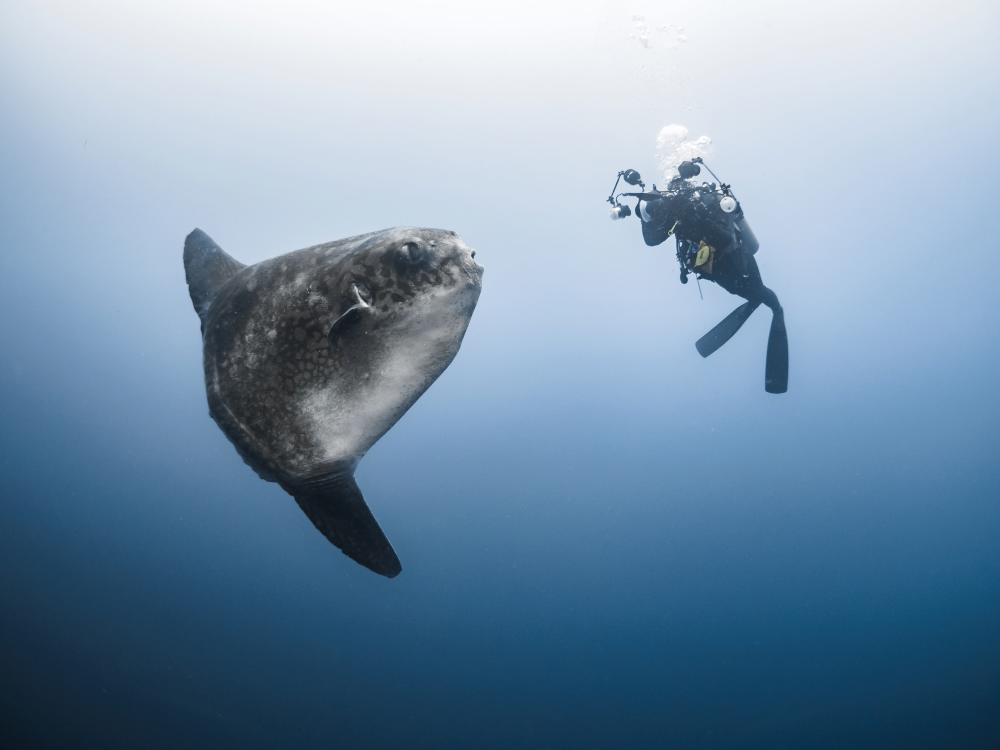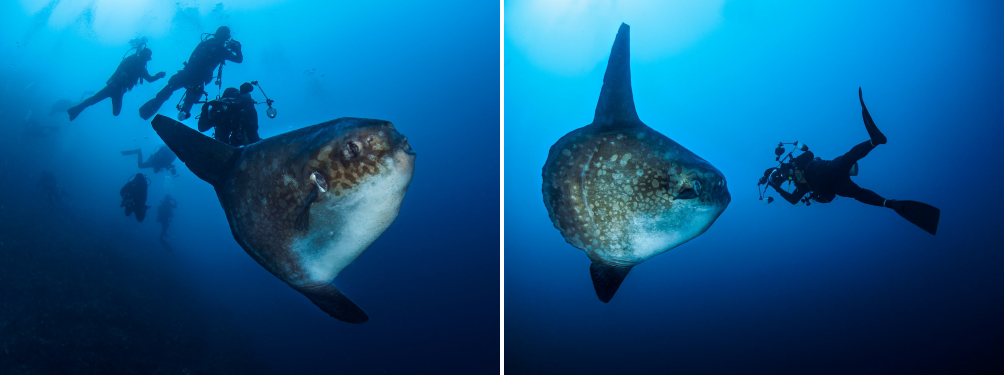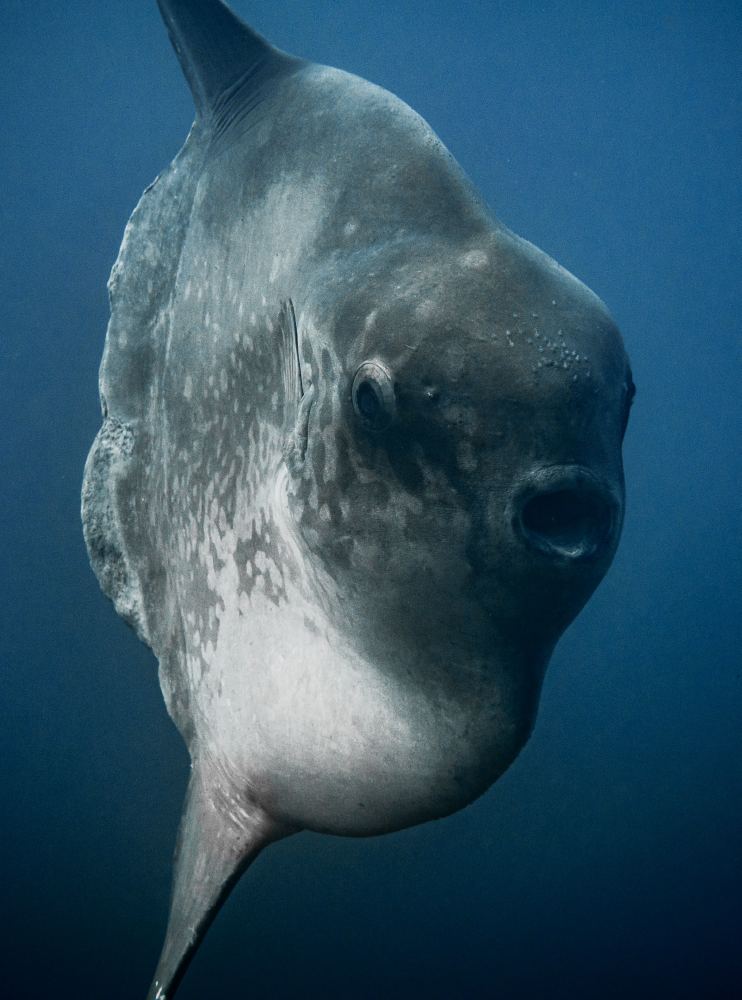So, my first dive in Balinese waters and I’m all set up for a nice gentle macro dive. I should probably say at this point that I’m used to diving daily in the much more sheltered, shallow and murkier waters of the Gulf of Thailand. It’s been a while then since I find myself in a “proper” current with some kicking swell and Gin Tonic clear water. Not much hope of staying still to get a shot let alone spotting anything to try one on! So I decide to quite literally go with the flow and enjoy the sweet delights of a proper drift dive in proper visibility.
I’ve travelled to Bali primarily to find and photo a Mola. I’ve been lucky that in over a decade of diving in Thailand to have seen and shot many of the macro and mega that divers and photographers dream of. However, one huge wish left on my bucket list has been to see a Mola. I’ve read and discussed over the years with customers, friends and colleagues the best times and places to see them. In 2015 I had the opportunity to take two weeks away from work and family to go find myself a Mola in Bali. A little research made it clear that the two best sites for the chance of a Mola encounter would be Gilli Mimpang and Chrystal Bay both of which are easily accessible from the south east of Bali in a small and busy port called Padangbai. Padangbai would also offer a host of other sites offering the full gamut of beasts and critters as well as easy day trips to other popular location like Tulamben.

So, back to drifting along Padangbai “Ferry Channel” on my warmup macro dive. About ten minutes into the dive I notice my guide moving away from the relative shelter of the reef into open and deeper water. Then 15 minutes of beautiful chaos ensued as my first Mola moved into view and swam past me, gloriously close. I am of course cursing myself and the universe as I’m set up for macro. So I try my best to get up close and personal and take a portrait shot to make the most of the situation. I’m blessed a little it seems on this dive as the Mola turns and swims back towards me very slowly allowing me plenty of time to get the distance and camera settings right. Just an amazing experience. Day one turned out far from the way I had envisioned it but, way way better.
Day two and after the ‘macro’ mishap of the day before I was double sure wide angle was the way to go as I was heading to Gilli Mimpang, specifically to find Mola. There had apparently been an unusually high number of sightings in the past week. Possibly because a recent super moon had brought a lot of cold water up from the depths. Mola are up to four meters vertically and usually inhabit deep water but will rise to the shallows with cold water upwelling to seek the cleaning services of reef fish.
Like so many marine species, if approached calmly, slowly and on their terms, not our own egos, then it is possible to have up close and sustained encounters. This was going to be a problem on this day though. As is so often the case with popular and accessible sites with sought after wildlife, it can so often bring out the worst in people.
I saw four Mola on the first dive of which the first two were immediately mobbed by divers and driven back into deep water. Fortunately, I had a very experienced local guide who managed to get me away from the horde and again up close with other Molas.

I was shooting with an Olympus OMD EM5 in a Nauticam housing and ports. I had planned to primarily use two lenses, the Olympus 60mm for macro and for wide the Lumix 8mm, but also use the Olympus 12-50mm lens for just pottering about. For lights I used two Inon D2000 strobes and a DeepBlue focus light. I love how compact and light this system is, not only for travel but underwater also. Especially in the proper currents, swell and surge diving around Bali can bring. All in all, my baggage including dive kit, photo kit and personals came in at 24kg. Awesome!
For shooting the Mola I used several techniques. Firstly, natural light only taking advantage of the crystal clear water and bright sunshine. For this I put the camera into shutter priority with a speed of 1/125 to make sure I could stop the action and get good sharp focus. ISO was either on 400 or 800 depending on depth and intensity of available light. The camera could then adjust aperture which, with the 8mm, still provides ample depth of field even wide open. Secondly, strobes on in manual and set two stops down from full to start with. Camera in manual mode so I would adjust settings to achieve the blue background desired while getting good exposure on the subject. ISO would again be either 400 or 800 depending on needs. The first approach is great if the action is fast moving as there is less ‘work’ to do with the camera allowing more time to get good position particularly if there are lots of divers around. The second works well for me when there is more time and the scene is less busy.
All in all, my Mola experiences were among some of the best I’ve had underwater. Bali has some amazing and extremely accessible diving. This is of course a blessing as well as a curse. However, with a little planning and the sound advice and guidance of local guides it’s more than possible to avoid the crowds. I’ll be planning a trip to Bali next year, if I can between September and October for Mola.
WORDS and PICTURES by Stefan Follows


















